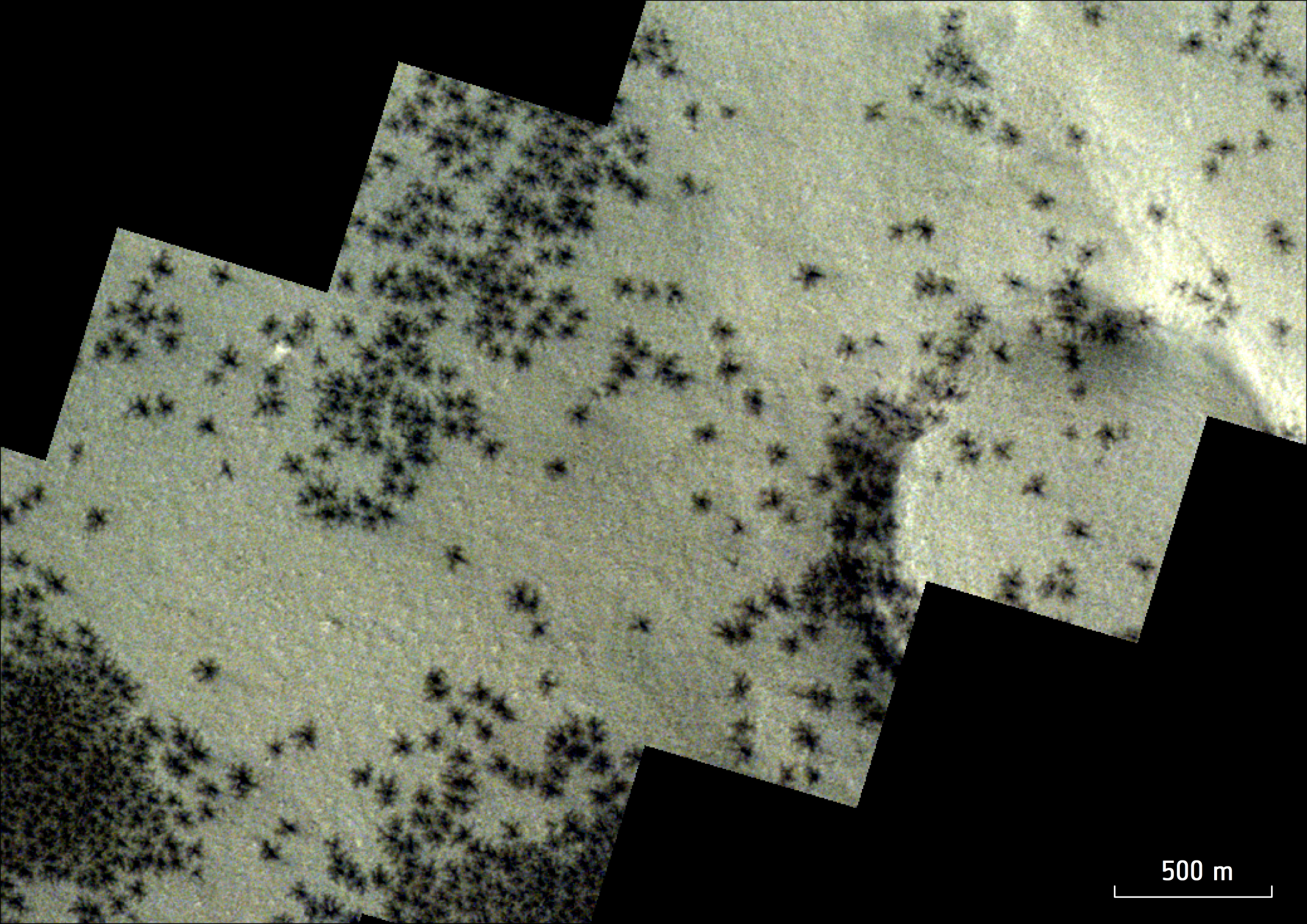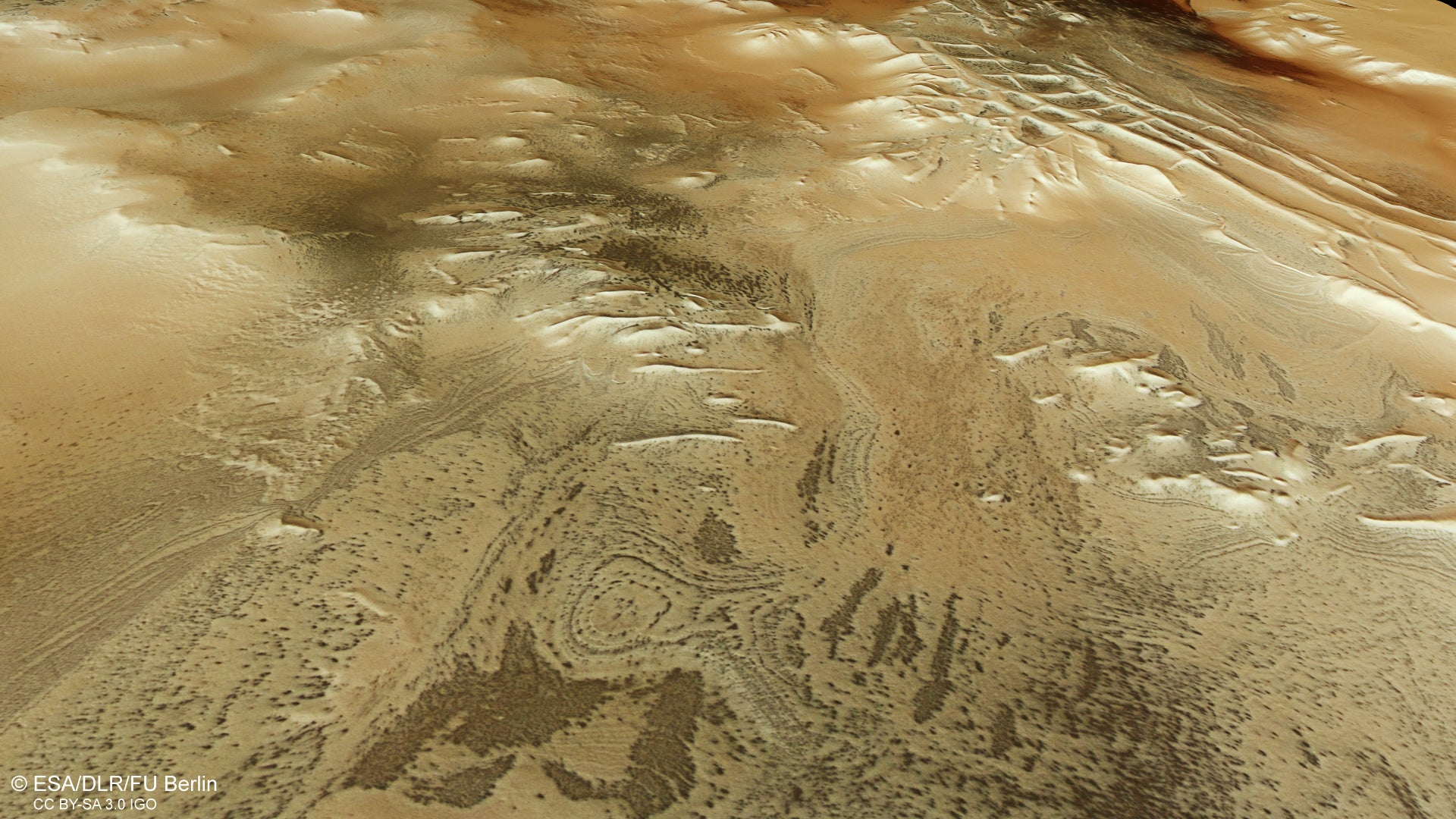It’s ‘spider’ season on the Red Planet. There are no actual spiders on Mars–that we know of–but arachnid-shaped black spots dot some parts of our celestial neighbor every spring.
[Related: Mars’s mascara-like streaks may be caused by slush and landslides.]
The European Space Agency (ESA) released new images of these seasonal eruptions in a formation called Inca City in Mars’ southern polar region.
How do Martian ‘spiders’ form?
Mars has four distinct seasons, similarly to Earth. Each Martian season lasts roughly twice as long as a season here. According to the ESA, these spider-like marks appear in Martian spring when sunlight falls on layers of carbon dioxide that have been deposited over the dark Martian winter. The sunlight causes carbon dioxide ice at the bottom layer to turn into gas. The gas builds up and eventually breaks through slabs overlying ice around Mars’ poles. When they burst free, the dark material is dragged up to the surface as it travels and shatters layers of ice that are up to three feet thick.

The emerging gas is full of dark dust and shoots up through cracks in the ice similar to a fountain or geyser. The gas then travels back down and settles on the surface. The settling gas creates dark spots which range from 0.3 to 0.6 miles across. This same process creates the spider-shaped patterns that are etched beneath the ice.
The image was captured by the CaSSIS instrument aboard the ESA’s ExoMars Trace Gas Orbiter (TGO). CaSSIS stands for Colour and Stereo Surface Imaging System and it was built at the University of Bern in Germany. It creates high resolution images designed to complement data collected on Mars. It is made up of a telescope and focal plane system that are mounted on a rotation mechanism and has three electronics units that relay images back to the ESA.
Mars’ mysterious Inca City
Most of the spots in this new image are seen on the outskirts of Angustus Labyrinthus–more commonly called Inca City. NASA’s Mariner 9 probe first spotted Inca City in 1972 and its geometric-looking network of ridges reminded astronomers of Inca ruins.
Scientists are still not sure exactly how Inca City formed. It may be sand dunes that have turned to stone over millennia. Materials like magma or sand could also be seeping through cracked sheets of Martian rock. The ridges could also be winding structures related to glaciers called eskers.

Inca City also appears to be part of a large circle–about 53 miles in diameter. Scientists believe that the ‘ formation sits within a large crater that may have taken shape as a rock from space crashed into Mars’ surface. The impact likely caused faults to ripple through the surrounding plain. The faults were then filled with rising lava and have worn away over time.
Towards the middle section of the image the landscape changes somewhat, with large roundish and oval swirls creating an effect reminiscent of marble. This effect is thought to occur when layered deposits are worn away over time.
[Related: Scientists brought ‘Mars spiders’ to Earth—here’s how.]
A few prominent steep, flat-topped mounds and hills stand almost 5,000 feet above the surrounding terrain. These mounds form as softer material is eroded wind, water, or ice. The harder material left behind forms these hills. Some signs of the ‘spiders’ are scattered across the dust-covered plateaus, lurking amongst various canyons and troughs.
The data for these images was captured on October 4, 2020 during Mars’ most recent spring. The Red Planet is currently in its autumn and its next spring equinox will be on November 12, 2024.





